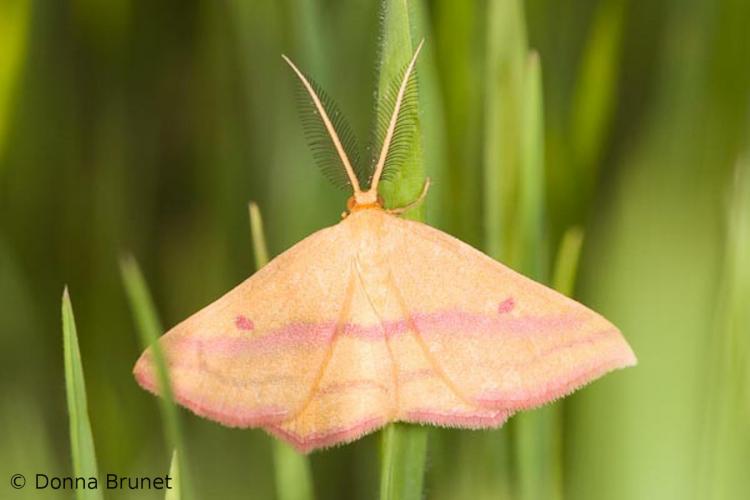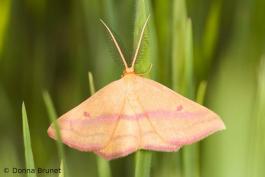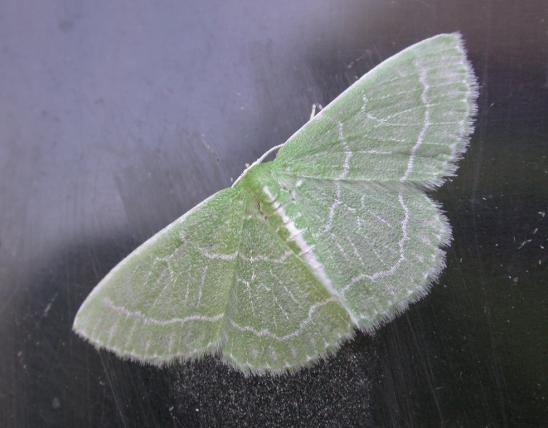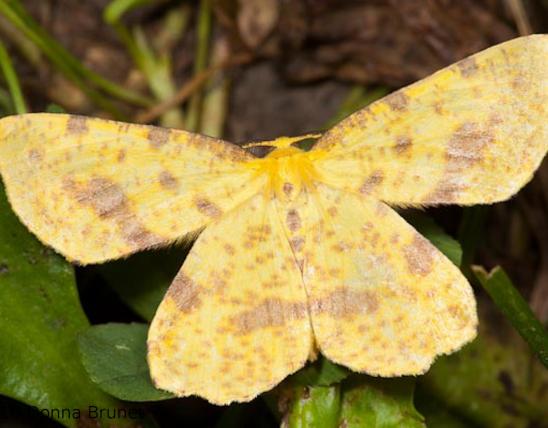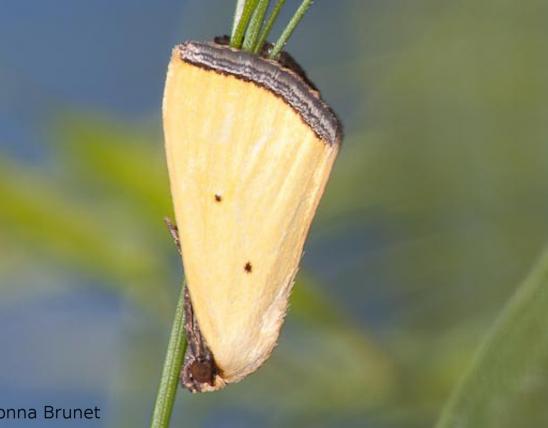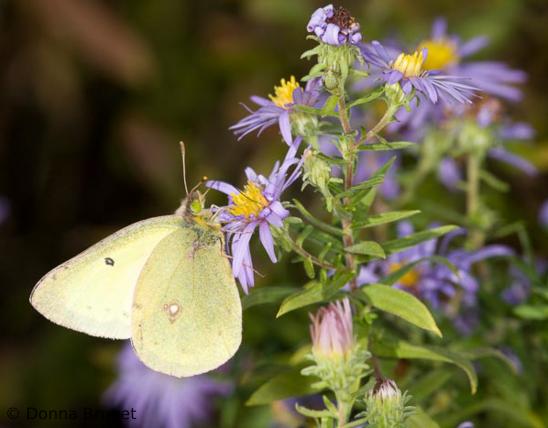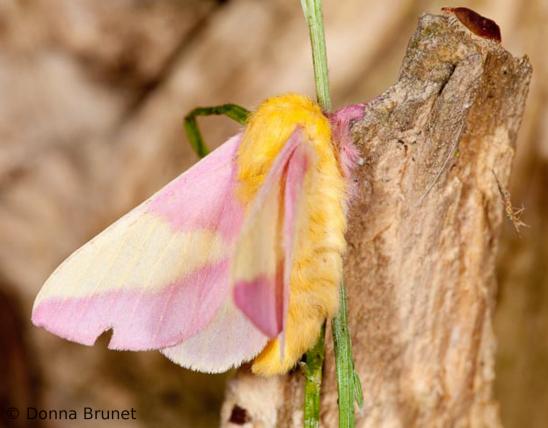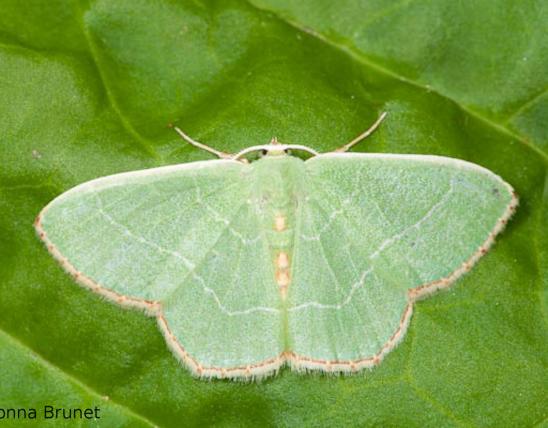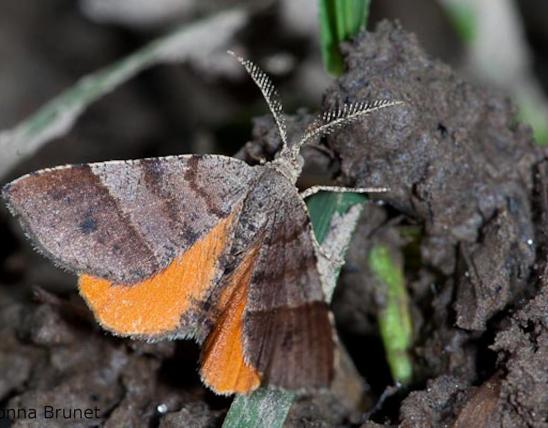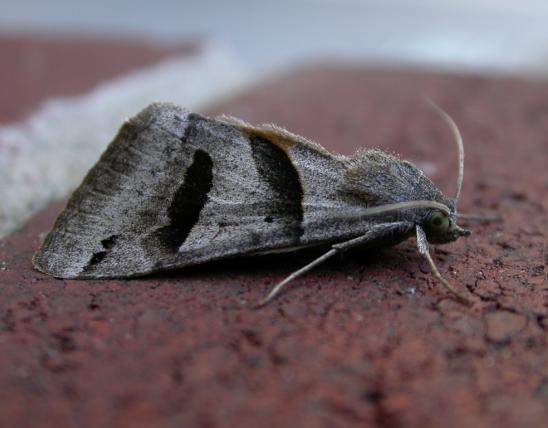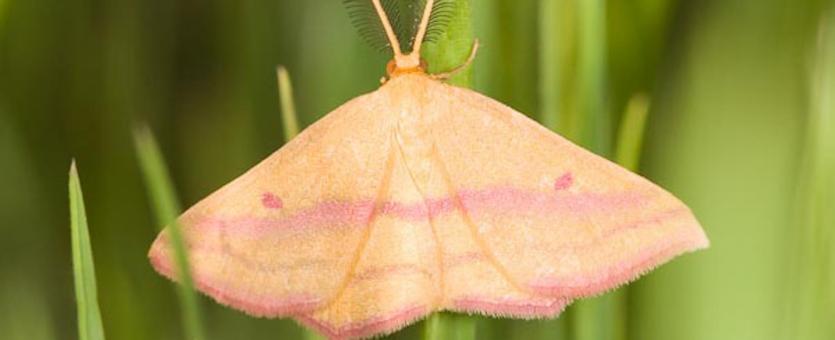
Adult chickweed geometers typically rest with wings held flat out to the sides. Forewings are pointed and dull yellow; each has a pinkish or reddish spot near the center of the wing. Two pinkish or reddish bands parallel the edges of the wings; in the typical resting posture, the bands on the forewings appear continuous with the bands on the hindwings. The antennae of males are featherlike; those of females are threadlike.
Larvae are slender, but thickened and rough at the first abdominal segment. Variable in color, with green and white stripes or checkered and mottled with colors including brown, tan, and red. Geometers (“earth measurers”) are the familiar “inchworms” that hump their backs (forming a “loop”) when they move the rear set of legs up to the front set, before moving the front set forward for the next “step.”
Similar species: The colors and patterning of this moth are pretty distinctive. Although in North America this is the only species in its genus, there are more than 1,400 other members of the family, most of which share the typical flat-winged posture and the trait of having the striped, bands, and other markings appear continuous between the fore- and hindwings.
Wingspan: ¾–1 inch.

Statewide.
Habitat and Conservation
Very common in vacant lots, weedy roadsides, and yards in urban areas, as well as in the countryside, in fields and grasslands.
Food
Larvae feed on chickweeds (Stellaria species) and other low-growing plants such as smartweed and clover.
Status
Abundant everywhere in the state.
Life Cycle
Adults fly from mid-April through October, often during the day. This moth is multibrooded. Larvae pupate in a thin cocoon.
Human Connections
Because the larvae of this moth feed primarily on chickweed, which most people consider undesirable, this species should be considered “beneficial.”
Ecosystem Connections
The caterpillars are herbivores that graze on vegetation. The adults may serve a role in pollination. All stages provide food for predators.
